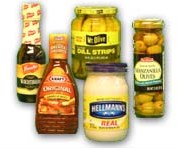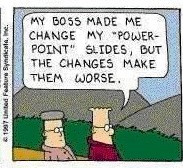dismay, dyspepsia, and digital archiving
 I’ve been flirting with dismay all week.
I’ve been flirting with dismay all week.It’s not that anything important has gone wrong. To the contrary, everything’s fine, just fine. Everyone’s on their meds. No-one is suing anyone. Appliances great and small are functioning, including the replacement black Signature Gourmet Coffeemaker, the lid of which has hardly warped at all yet.
It’s more that there’ve been a maelstrom of aggravations, petty disappointments, and minor fuck-ups.
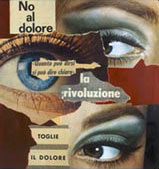 Let’s take Thursday for example. For the last couple of weeks, I’d been looking forward to the Digital Archiving Symposium slated to be held at the Berkeley Art Museum. It’s the right topic and so close to home, just across the Bay.
Let’s take Thursday for example. For the last couple of weeks, I’d been looking forward to the Digital Archiving Symposium slated to be held at the Berkeley Art Museum. It’s the right topic and so close to home, just across the Bay.I was late to begin with.
I don’t think anyone would contradict me if I said I have a hard time getting organized and out of the house, particularly on winter mornings. It’s not as though Collingwood Hill ices up or I have to clear drifts of bay-effect snow from our driveway. In the winter, the yellowjackets aren’t even active.
 It’s just that there’s so much more to find in the winter. Gloves. Both of ‘em. Hat. A different, less weird looking hat. Not that one either. No. Another hat, a less attractive hat, but one without moth holes. Oh, forget it! Who – besides indie rockers – wears a hat anymore anyhow? And they always wear knit caps with tassels and ear flaps. Ear flaps? Who needs that? Forget the hat.
It’s just that there’s so much more to find in the winter. Gloves. Both of ‘em. Hat. A different, less weird looking hat. Not that one either. No. Another hat, a less attractive hat, but one without moth holes. Oh, forget it! Who – besides indie rockers – wears a hat anymore anyhow? And they always wear knit caps with tassels and ear flaps. Ear flaps? Who needs that? Forget the hat. Scarf. Ah, that one is easy. Until we reach the critical question. Scarf: on or off? Why would I wear a scarf in the car? The car has a heater. But I’ll be glad to have the scarf when I get out of the car, which I’m going to need to do, since I can’t take my beloved battered white Civic hatchback into the Berkeley Art Museum’s auditorium with me, even though it has very low emissions.
Scarf. Ah, that one is easy. Until we reach the critical question. Scarf: on or off? Why would I wear a scarf in the car? The car has a heater. But I’ll be glad to have the scarf when I get out of the car, which I’m going to need to do, since I can’t take my beloved battered white Civic hatchback into the Berkeley Art Museum’s auditorium with me, even though it has very low emissions.Sweater. Ah, now it’s getting complicated. You have to put these things on in the right order. If you don’t, you have to shed all of the layers and start again.
Then there’s the galvanic shoe response, an important electro-mechanical effect that occurs when you’ve got one shoe off and one shoe on. This results in unequal potential which forces you to play Spider solitaire briefly until equilibrium is restored.
And where’s my darned cell phone? I call it from the wireless land line hand set, which has somehow found its way into my jacket pocket, and hear a muffled sound emanating from… the refrigerator. Aha! There it is. I switch the land line into the refrigerator and the cell phone into my pocket.
It does take awhile to get out of the house.
 And by the time I leave, I’m a bit behind schedule. I’m in luck though, however briefly, because the bridge traffic is not at all daunting. A few Denalis and Suburbans and Ryder Rent-a-Trucks weave a braid of unwise lane changes. I do my best to ignore them and limit myself to a few muttered epithets. I should’ve BARTed, but I just couldn’t deal with the idea of being underneath the bay; I felt particularly unseaworthy last Thursday.
And by the time I leave, I’m a bit behind schedule. I’m in luck though, however briefly, because the bridge traffic is not at all daunting. A few Denalis and Suburbans and Ryder Rent-a-Trucks weave a braid of unwise lane changes. I do my best to ignore them and limit myself to a few muttered epithets. I should’ve BARTed, but I just couldn’t deal with the idea of being underneath the bay; I felt particularly unseaworthy last Thursday.Although – in truth – like all of the graduates of Miss Dawn’s Swim School on Avenue I in Redondo Beach, I am scared of water. They used a special form of pedagogy at Miss Dawn’s that guaranteed you’d leave the place able to swim, but paradoxically frightened of water. “If you don’t open your eyes underwater, I’m going to let you drown.” That was the magic incantation they used on us. It wasn't just me; Marcia remembers it too.
So now I’m scared of water.
Well, not scared of water as in, say, drinking water or bottled water, but scared of being underwater, even if the Transbay Tube is between me and said large volume of water. I have to keep my eyes closed down there. Squinched shut so no chlorine gets in ‘em. Call it a reflex.
 My gloves, on the seat beside me, seem to me to be a harbinger of aggravation to come. Actually, only my right glove is the harbinger. My left glove is fine. Just fine. The nap of the suede is supple, with a nice matte finish. The other glove looks different. Not quite right. The nap is dull, as if it were a sick animal.
My gloves, on the seat beside me, seem to me to be a harbinger of aggravation to come. Actually, only my right glove is the harbinger. My left glove is fine. Just fine. The nap of the suede is supple, with a nice matte finish. The other glove looks different. Not quite right. The nap is dull, as if it were a sick animal.What happened is this: On Monday, my right glove impersonated a sock (quite tragically) and found its way into the laundry. And despite the Woolite, it came out looking pretty frowsy, more or less as it still looks on the seat beside me.
How did those gloves get separated? Why did the right one think it was a sock? Did it have a death wish? Why is it not scared of being underwater?
By the time I’ve lamented the condition of my right glove, fretted about whether it’s worth it to drive to avoid being underwater, and used my x-ray vision to determine that there are no explosives in the yellow Ryder truck beside me on the Bay Bridge, I’ve exited on the University Avenue offramp, and am jockeying for position with several dozen Subaru Outbacks and weatherbeaten Volvo station wagons.
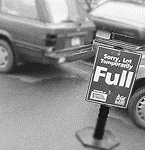 Berkeley has some sort of topological anomaly that causes me to become extremely disoriented. It’s probably all those whirled peas. I overshot campus both to the north and east before I started looking for parking. The first lot I tried was over-filled and I ended up having to retrace my route backward out of the lot, in reverse, chased by an overwrought parking lot attendant who clarified that the lot was FULL.
Berkeley has some sort of topological anomaly that causes me to become extremely disoriented. It’s probably all those whirled peas. I overshot campus both to the north and east before I started looking for parking. The first lot I tried was over-filled and I ended up having to retrace my route backward out of the lot, in reverse, chased by an overwrought parking lot attendant who clarified that the lot was FULL.FULL! He screamed. FULL!
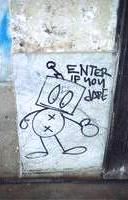 I’m not used to backing my car through so many tight turns with an overwrought parking lot attendant flapping his windbreaker at me and yelling FULL through the whole ordeal. Not used to it. By the time I’ve located the entrance to another lot off of Channing, I’m beginning to wonder if I’m even interested in digital archiving anymore.
I’m not used to backing my car through so many tight turns with an overwrought parking lot attendant flapping his windbreaker at me and yelling FULL through the whole ordeal. Not used to it. By the time I’ve located the entrance to another lot off of Channing, I’m beginning to wonder if I’m even interested in digital archiving anymore.I should choose a topic with access to loads of free parking. Something with symposia in Bloomington, Indiana or Champaign-Urbana.
The second lot – a block-spanning multi-story public lot that empties onto Durant – looks promising. $1 back with validation. Pay in the lobby. But what’s the rate? I glimpse $4 as I enter. $4 is good. It’s suspiciously easy to find a space in this parking garage. Suspiciously easy. Here’s why: It’s $4 per hour I later discover, after I’ve racked up a $20 parking charge.
As I said, it’s a week for mild dismay, not full fledged upset. $20 is not a lot to pay for parking, but it works out to be as much – if not more – than parking in the short-term lot at SFO.
What I should’ve done then is parked at SFO and flown to Berkeley. That would’ve been more satisfying. I always feel satisfied when I walk out of the airport and right to my car. There’s something very efficient – if not particularly environmentally friendly – about this strategy.
Should’ve flown. Should’ve flown. Then I wouldn’t have been underwater and I wouldn’t have had a car to park in Berkeley.
 Eventually I’m ensconced in an auditorium chair at the Berkeley Art Museum with an Imagine Peace button affixed to my scarf. There’s a Yoko Ono program on at the Pacific Film Archive, and there’s evidence of it here and there in the museum. I’m hoping the Imagine Peace button will make me feel more like a Berkeleyite.
Eventually I’m ensconced in an auditorium chair at the Berkeley Art Museum with an Imagine Peace button affixed to my scarf. There’s a Yoko Ono program on at the Pacific Film Archive, and there’s evidence of it here and there in the museum. I’m hoping the Imagine Peace button will make me feel more like a Berkeleyite. I’ve scouted out the whole auditorium: there are neither power plugs for one’s laptop nor wireless connectivity, which I suppose will force me to pay attention to the symposium.
I’ve scouted out the whole auditorium: there are neither power plugs for one’s laptop nor wireless connectivity, which I suppose will force me to pay attention to the symposium.But during the first talk of the afternoon, I’m already drifting. At first there’s nothing that Kurt Bollacker (of the Long Now Foundation) says that I find controversial. He’s right. You’ve got to move the bits around (which ensures there are lots of copies), distribute them (which ensures they’re not all in one place), and store them in diverse formats on different media (which ensures that at least one of your bets might be right). That all makes perfect sense to me.
 In fact, in many ways, physical archives are more vulnerable than digital ones. A few years ago, the photo archives of both the Weekly World News and the National Enquirer were lost to the anthrax attack on the newspapers’ Boca Raton, Florida headquarters. There were no backup copies of the documentary photos of alien encounters, bubble boys, or Elizabeth Taylor comforting Michael Jackson. This was an irreplaceable resource for those of us interested in truth.
In fact, in many ways, physical archives are more vulnerable than digital ones. A few years ago, the photo archives of both the Weekly World News and the National Enquirer were lost to the anthrax attack on the newspapers’ Boca Raton, Florida headquarters. There were no backup copies of the documentary photos of alien encounters, bubble boys, or Elizabeth Taylor comforting Michael Jackson. This was an irreplaceable resource for those of us interested in truth.Digital archives are seldom mistaken for socks and thrown in the wash with the dark colors; but that’s not what makes them less vulnerable. What makes them safe is that it’s easy to copy them; the same BitTorrent that sprays digital music and nasty viruses across the network is also capable of helping to preserve digital archives.
All of this is fine. But here’s where minor dismay comes back into the picture: by the time I’ve finished my little reverie about my gloves and the Weekly World News’s lost photo archives, Kurt is talking about emulation.
Emulation, at first blush, seems like a swell way to keep files fresh and clean-smelling. You basically build a virtual computer so your files live on under the illusion that original applications are running and the bits are being rendered in a computing environment of yesteryear. Completely lossless. If you’re careful, you can even preserve the temporal qualities introduced by the computer’s clock speed so that a piece of emulated software runs at the same sluggish pace that it used to, which may be very important if you’re preserving digital art or reviving long-dead video games.
 You can’t play Crystal Quest at today’s processor speeds, especially if you’re using yesterday’s neurons like I am.
You can’t play Crystal Quest at today’s processor speeds, especially if you’re using yesterday’s neurons like I am.As a strategy, emulation drives me crazy. The vestigial computer scientist in me says, “oh, yes. Emulation’s great.” But deep down, I know emulation is an all but impossible strategy over the long run. And much of the time, it’s not even necessary, given what you want to save and how you expect it to be used. [nb: before you contradict me, I do realize that interactive art is a special case, and may indeed require emulation, re-implementation, or some pretty descriptive documentation.]
Here’s why I don’t think emulation is as viable as these guys say.
Our current computing platforms are horribly complicated and imperfectly maintained. For example, did you know that fonts have little bits of code in them so that they’re rendered properly? And that digital media like videos rely on software called codecs (which stands for compression/decompression) to make them viewable? And that many applications call software libraries, some of which may have been clobbered by doppelgangers somewhere along the way?
This is not to say that emulation can’t be done. But rather that it’s expensive and relies on a very good assessment of what’s valuable and what’s not.
 You don’t want to be following the wrong You Tuber down the wrong You Tube, so to speak. That’d be like loading your potato gun and shooting it at Dan Quayle. It’s just not cost effective, and it only serves to irritate the target.
You don’t want to be following the wrong You Tuber down the wrong You Tube, so to speak. That’d be like loading your potato gun and shooting it at Dan Quayle. It’s just not cost effective, and it only serves to irritate the target.And an emulation may be just as impermanent as the platform that’s being emulated if you make the wrong assumptions.
By the time Jeff Rothenberg walked through his canonical example, “Renewing the Erlking,” my dismay was growing; it had even spread to Ben Gross, who was sitting next to me. Our computing platforms are considerably more complicated than the one hosting the 1982 mixed media piece Jeff described. Programs and operating systems were svelte back then. Barbie as opposed to Jabba the Hut.
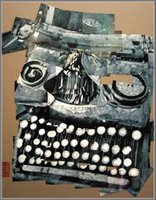 Of course, Bruce Sterling gave a fabulous (if slightly inscrutable and dystopian) closing keynote. According to my notes, he talked about Thaddeus Cahill. Sappho. The dairy product theory in which media is like milk. Cosmic rays. Extinction 6.0.
Of course, Bruce Sterling gave a fabulous (if slightly inscrutable and dystopian) closing keynote. According to my notes, he talked about Thaddeus Cahill. Sappho. The dairy product theory in which media is like milk. Cosmic rays. Extinction 6.0.But I still left the auditorium brushing off the psychic residue of dismay. It was not what I’d hoped to hear about digital preservation.
After I’d ransomed my car from the $4.00/hour lot and remembered that exiting on Durant is stupid because it’s one way the wrong way, I decided that the only way to soothe my frayed psyche was to buy one of those banana sticky rice cakes at Tuk-Tuk Thai Market and eat it while I was weaving my way back home across the Bay Bridge, wondering if this Ryder Truck was the one with all the explosives.
I really like banana sticky rice cakes. They’re not cakes; they’re more like tamales. Except instead of corn husks, they’re wrapped in banana leaves. And instead of corn meal, they’ve got sticky rice. And instead of meat, they’ve got coconut milk, red beans, and bananas. But other than that, they’re just like tamales. I’m very fond of them. Very.
Tuk-Tuk is on University, just shy of Sacramento. It’s even on the way to the bridge, once I’m pointing in the right direction.
There’s something amiss at Tuk-Tuk. I can tell right away. First I look for my favorite Korean salty seaweed snacks. The ones that are deep fried. They’re hailed as “A Delightful Taste You Never Expect From Sea Vegetables” and they are, in fact, a fine illustration of how deep frying and large salt crystals trump everything else when it comes to food. There aren’t any on the shelves. In fact, the shelves are suspiciously empty. And when I head over to the cooked food counter, there are no Thai tamales. Not a one.
When I ask, the guy who always smiles tells me they don’t make them in the store any more.
I try to hide my dismay and pick up another item that’s roughly the same size and shape, but is wrapped very tightly in saran wrap instead of banana leaves.
Drat. I love those sticky rice cakes. But I’m hungry and I’ve gotta buy something to eat while I’m inching my way across the Bay Bridge. My blood sugar is too low to be driving a car.
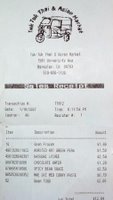 The smiling guy is manning the register when I check out. He’s not sure how much the saran-wrapped item costs. But he trots back to the cooked food counter (where I probably should’ve paid for this item) and finds out how much it is. $2.00. That’s twice as much as the banana sticky rice cakes; whatever this is, it must be twice as good.
The smiling guy is manning the register when I check out. He’s not sure how much the saran-wrapped item costs. But he trots back to the cooked food counter (where I probably should’ve paid for this item) and finds out how much it is. $2.00. That’s twice as much as the banana sticky rice cakes; whatever this is, it must be twice as good.I pay for my groceries and walk out into the twilight. In the low light, I can’t really see the unknown food item as I wrestle with the saran wrap encasing it. It sure is tightly wrapped; it’s hard to peel the plastic away from the edible stuff inside. I’m anxious to get at the food, whatever it happens to be. I briefly contemplate eating the plastic.
The smell is unfamiliar, but strong, possibly even unpleasant. I’m beginning to doubt that it’s sweet like the banana sticky rice cakes. I launch into it anyway; I haven’t even started the car I’m so hungry and eager to eat this tidbit. The Tuk-Tuk parking lot has all the atmosphere I need.
 But what’s this? The rubbery texture is a little too familiar. I grew up in LA; I’ve had menudo. This, this outer stuff that’s been so tightly encased in plastic is TRIPE. Ick. I can’t even imagine what the ground up material inside it is. It looked pink in the store’s fluorescent lighting through the partial translucence of the tripe. I’d originally thought it was one of those red bananas. But now I know I don’t want to know. ICK. ICK. ICK.
But what’s this? The rubbery texture is a little too familiar. I grew up in LA; I’ve had menudo. This, this outer stuff that’s been so tightly encased in plastic is TRIPE. Ick. I can’t even imagine what the ground up material inside it is. It looked pink in the store’s fluorescent lighting through the partial translucence of the tripe. I’d originally thought it was one of those red bananas. But now I know I don’t want to know. ICK. ICK. ICK.ICK. I’m just not that hungry. I cast about through my purchases to find something to kill the taste that lingers in my mouth. I cannot drive all the way back to San Francisco with those tripe molecules stimulating my taste buds. I rip open a package of wafers and cram one in my mouth. It is dry. The wafer shatters and fragments go everywhere.
 Not good enough! Not good enough! The second bag I rip open is wasabi peas. Crunch. Crunch. Crunch. Crunch. Tears well up in my eyes, but I can no longer taste the rumen. I speed off into the evening, chastened by my lack of gustatory sophistication. ICK!
Not good enough! Not good enough! The second bag I rip open is wasabi peas. Crunch. Crunch. Crunch. Crunch. Tears well up in my eyes, but I can no longer taste the rumen. I speed off into the evening, chastened by my lack of gustatory sophistication. ICK!My inner vegetarian is crying out, like it did when I heard about the Leaf Cutter Ants Julie sprinkled on Morgan’s birthday pizza.
When I get home, I look at the cash register receipt. David Levy’s fine account of his tuna sandwich receipt has made me acutely aware of the documentary power of even this most homely and minor of scraps.
So what was the mystery tripe tube? What was it called? How will I know never to get one again? Okay. I bought an Open Frozen, a ROASTED HOT GREEN PEAS, a KASUGAI LYCHEE, a CHOCOLATE WAFER, a SPICY BEAN SAUCE, a MAESRI RED CURRY PASTE, and an Open TOGO.
That’s what it was then: an Open TOGO. I’m not going to be having one of those again soon, those Open TOGOs. Open TOGOs are, well, offal.
I’m more saddened and dismayed that my favorite Thai market is going out of business though than I am about my bad snack choice. I’ll either have to brave Irving Street in the Sunset or 99 Ranch in Albany, where shoppers more aggressive than me clip my ankles with their shopping carts while I squint at labels, trying to figure out what I’m buying.
 Minor dismay is hard to quantify. There are no units by which to measure it. No joules, watts, amperes, ohms, or liters for counting out an accretion of minor dismay. Express it too often as a qualitative emotional state, and people’ll peg you as fussy.
Minor dismay is hard to quantify. There are no units by which to measure it. No joules, watts, amperes, ohms, or liters for counting out an accretion of minor dismay. Express it too often as a qualitative emotional state, and people’ll peg you as fussy.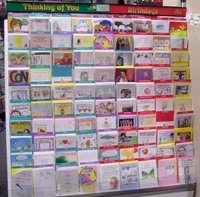 There are no greeting cards for it either. Greeting cards that say: “Sorry you feel vaguely disheartened this week. Your right glove doesn’t look that bad and parking is oftentimes expensive. Someday you’ll be a better swimmer and your feelings about emulation will be vindicated.”
There are no greeting cards for it either. Greeting cards that say: “Sorry you feel vaguely disheartened this week. Your right glove doesn’t look that bad and parking is oftentimes expensive. Someday you’ll be a better swimmer and your feelings about emulation will be vindicated.”Minor dismay is not a legitimate emotion like rage or sorrow. Nor is it a legitimate illness like the cold that replaced it and left me sniffing and snuffing and rasping and wheezing.
But, in the end, I sit here in a snit and that’s what I am: a little dismayed and not quite dyspeptic enough to chew on a Tums.






